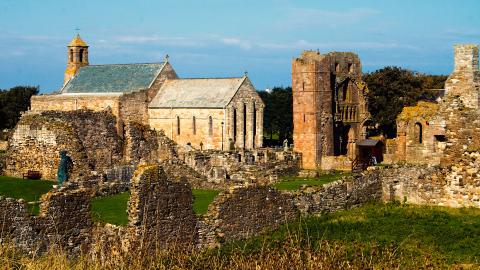
Newly Discovered 7th Century Church Was Launching Pad for the Gospel in England
Archaeologists unearthed the foundations of a church believed to be the very site where much of medieval Europe heard the Gospel for the first time.
Researchers from the Peregrini Lindisfarne Landscape Partnership Scheme uncovered the stone foundations of the church while excavating the Holy Island of Lindisfarne. Scholars believe St. Aidan and St. Cuthbert used this site to convert much of northern and central England to Christianity.
Experts believed the original Anglo-Saxon churches stood on a rocky ridge called the Heugh. That's where archaeologists found the remains of the church of St. Aidan and St. Cutherbert.
Sara Rushton, conservation manager at the council, told the Daily Mail: 'This latest discovery of a potential church building on the Heugh cements Holy Island as one of the most significant early medieval sites in Britain."
The Holy Island is called the Cradle of Christianity because St. Aidan established a monastery here in 635 AD. The monastery was a place of worship for pagans who converted to Christianity and later became an international center of learning
This site is also the birth place of the Lindisfarne Gospels, which were some of Britain's earliest manuscripts of the Gospel written by monks.
When Vikings raided the Holy Island the monks escaped with the texts in hopes of preserving the gospel in England.
Scholars found the sacred texts centuries later and they stand in the British Library's collection in London today.


